Roughs are good as in the city trait - on the territory of Alley and parks and in the country area. Throughout the year, they decorate the place in which are located. Today we want to offer you information about the types of Tui, the features of landing and care for them.
Tui description
In Latin, the name sounds like "Thuja", it happened from the Greek word meaning "anonymous". When the Tui wood burns, a pleasant specific aroma is spread around. American Continent or East Asia - these are the hodges of the Tuy. These representatives of the cypress family are growing in the form of a shrub or tree. There are specimens that reach seventy-meters seventy-meters for many years. The crown shape is diverse: spherical, pyramidal, column-like, cone-shaped. It is formed by numerous shoots branching in the same plane. In young plants, the structure of leaflets needle, as they are growing, they become flat-behable. Scales are tightly superimposed on each other. The color of such a kind of foliage may be not only different shades of green, but also Pyroy, lemon, bronze, reddish. These monocotted gone plants are formed oval or oblong cishets, having two to six pairs of scales. Those that are at the top are sterile, in the rest are hidden alone, two or three (which happens rarely) the seeds. Flat seeds with narrow "wings". Aging occurs already in the first cycle of the development of this conifer.
What are the Tui?
Western - it is precisely it that can be seen in the parks, reclining, in large garden sites. Grows slowly, resistant to wind gusts, rack to frost. It has many varieties and original varieties. Massive representatives can approach 8-11 meters in height. Most of the Tuy of this species are long-livers living for a thousand years. The average age of cultural forms is 150 years. Little Tui looks like pyramids, over the years of their crown changes and becomes an ovoid shape. The color of the needles more often than green shades, in the winter "outfit" can conquer or torture, but in the spring thuja again "changed" in the summer "costume." Against this background, flowers are minorly awake, they are yellow-green. But the coloring of the cones is red-brown. Many landscaping designers choose plants with a cone-shaped, column-like or konle-shaped form.
Common varieties:
- Thuja "Smaragd" - squat cone-shaped plants not exceed 200 centimeters. Branching is weak. Savages are placed vertically, the branches are far from his friend.
- Thuja "Brabant" - this tree has a form of crown similar to a cone, and the height is fifteen to twenty-one meters. When the tree is an adult, the diameter of the widest part of the crown within three or four meters. The bark is reddish or brownish gray, peeling. The color of scales needle - green. Brown bumps, their shape is oblong-ovate, length not more than 12 millimeters.
- Thuja "Danika" - this dwarf form is derived by breeders in Denmark. She looks like a ball. The coloring of the peeling bark can be reddish or gray-brown. Coniferous scales are painted in green, soft. In winter, a brownish shade is noticeable on a brilliant needle.
- Thuja "Woodward" is another spherical dwarf shape with a green jeey, its height does not exceed 250 centimeters. The diameter of the "ball" of the crown is about 5 meters.
Some more interesting Tui varieties:
- "Phiismis" - this small tree (no more than 150 centimeters) is a thick rounded or a cone-shaped crown form. A characteristic feature is long hanging, almost challenging filamental shoots. The needles are painted in a light green color, and in the winter months you can see a brownish tint.
- "Bodmery" - the height of the shrub to two and a half meters, the needles are tightly adjacent to the bizarre branches, painted in a dark green color.
- "Erikidees" - has similarities with juniper, does not exceed 100 centimeters height. Thuja biconic, rounded with multiple peaks. There are a lot of shoots, they are flexible, straight or slightly curved. The needles are soft, breadth, the upper side is yellow-green, and the bottom is greenish-gray. In winter, the needles brown.
- "Column" is a slow-growing tree with a column-like crown, less often growing like a shrub. In mature years can reach a decade meter. Usually even in winter, the color of the needles remains dark green.
- "Globos" - this dwarf shrub is similar to the green "ball", the diameter of which is 100-120 centimeters. In winter, he changes painting on a brownish.
- EUROPA GOLD - Shrub grows slowly, in the adulthood its height is within 2.5-4 meters. First, the painting of the needles on the growing shoots is golden-yellow, gradually it changes to orange.
- "Aurea Nana" - this "baby" in a height of 60 centimeters. In winter, she is in brown "outfits", in spring in yellowish-green, and in the summer and autumn - in light green.
- Sankist is a tree with a conical crown and golden-yellow cheese, the maximum height is 3.5 meters. Necessarily needs an abundance of light.
- "Ringold" is the diameter of the spherical crown within one and a half meters, and the altitude is the same. At first, the needles on the shoots pinking, in the summer it becomes golden, and by winter "puts on" the bronze "outfit". But such a "dressing" is possible only under the condition of good lighting.
The breeders managed to bring the form of the Tui, at which two types of needles are at the same time - needles and scales. At about the age of eight to ten years, this thuja disintegrates as if several peaks. It seems that not one thuja is planted, but a whole group.
- Folded (giant) is its natural habitat - the coast of the Pacific Ocean. It has no impressive dimensions there - the diameter of the adult tree within three meters, and the height is about 60 meters. Effective thuja of more modest sizes. One of its forms is called "Zebrina", more expressive varieties of "Atrovirens", "Aurea", "Supraa", "Stoneham Gold", "Hillieri", "RogersII".
- Korean - grows in the form of a tree, reaching a nine-meter height or a wide shrub with a silver housing. In the cold regions it must be strengthened for the winter. Therefore, it is better to grow in the regions with a mild climate.
- Japanese - Her habitat is a mountainous part of Japan, there she is growing up to 18 meters in height. It grows quickly only in the warm regions, in the cold climate it slows down. Copper-red bark, Croon cone-shaped. From the bottom side of the sprigs are silver, if they lose them in hand, the pleasant aroma of lemon and eucalyptus lollipops is felt. Loves clean air, in the urban drawing it is not grown.
In horticulture and park construction, the thuja eastern (otherwise - the biota is eastern). Now in the way "Tui" do not consider it, it is transferred to a separate monotypical appearance. Specialists gave this type the name of the Eastern Planner.
How do tuyu in landscape design?
The abundance of forms and varieties allows specialists in design and ordinary dachensons, loving conifers, embody different options and ideas of the placement of the Tuy:
- as elements of the "alive" swelling near the fence (preferably for tall species);
- near the house, in the yard or near the benches in park areas (the average and tall forms are suitable);
- for registration of neat borders along the tracks on the alleys (preferred dwarf grades);
- near the mountaineering in the country area;
- contrast compositions are obtained if with a group landing to use forms that differ in the color of the needles (for example, "Bodmery", Aurea Nana, Elegantissima, Danika, "Europe Gold", "Sankila", "Variagat", "Supraa "," Zebrina "," RogersIi "," Hillieri "," Ringold ");
- even in industrial zones, where the environment is polluted, the thua is growing well and as far as possible purifies the surrounding space.
Where and when to plant a thuja?
- Saplings purchased with an open root system must be planted in spring for better survival.
- If you have purchased in a container, its roots are in the substrate, then these copies are normal and summer.
- If you put in the fall, then there is no confidence that it will have time to adapt to a new habitat for it before the arrival of winter.
Now another question rises - what kind of soil is needed for the Tui? Open soil this swable is desirable nutritious (with the presence of a turf, peat and river sand), constantly moistened and loose. This conifer will grow in clay, and in the scees, where there are few nutrients, but then it will not look so attractive.
Thuja loves light, but if it will be all day under intense sunny rays, it loses a lot of moisture. Long-term dehydration is fraught with the fact that Tui will be difficult to worry the winter months. Try to choose such a place for the Tui, which will be light, but at half the afternoon there should be a shadow or half. If the thua is constantly in the shade (this is especially true and yellow-painted forms), then the painting of the needles will not be so intense and shiny. In such conditions, the content of thuja is radically, it is noticeable by "bald". And the cones she gives the shadow more.
How to plant yourself?
- If in the description of the variety it is indicated that the tree will be large and high, then the car's seedling is so that from other trees it is at a distance of at least three meters. Dwarf molds can be planted with a distance from a meter or one and a half.
- If the car's seedlings are placed along the alley, then a distance of three or three and a half meters is desirable.
- If the roots of the thuu dried, then the seedlings hold for some time in water tanks.
- The size of the pit that needs to dig, it is very dependent on the size of the root system of your seedlings. It happens that you have to make a depth of about a meter. Focus so that the width is 40 centimeters more excavated coma with roots, and the depth is 30 centimeters more.
- Drainage materials and a layer of Earth from a compost pile (or overwhelmed manure) are sent to the bottom.
- Next prepare a mixture for filling the landing pit, consisting of rods, peat and sand. Part of the soils are immediately sent to the pit, then the roots are placed on the hilly (if they were in the open form) or carefully take out all the contents of the container and placed in the pit. At the same time, the root neck should settle directly at the level of the earth's surface.
- After the pit is falling asleep, there is a bit of the earth and pour a new pet. Maybe one or two big watering can leave.
- The next stage of landing is a mulching for which: crushed pine bark, compost beveled grass with a lawn or peat crumb. The mulch layer will protect both heat and low temperatures. Just do not pounce the mulch material on the truncologist or lower twigs to avoid the ripening.
- It is possible to increase the survivalability by conducting processing (under root and extraxodes) immunity stimulants, such as "zircon", "Super Gumisol".
How to grow the thuly?
- Tui really like watering. Young plants are quite a decider bucket per week. As it increases, the volume of water flowing is increasing. Adult trees may need for good humidification of the soil and five such vessels. If the rains are small, then the watering will have to do twice a week. If you water it right correctly, then the crown has bright, lush. Symptoms that Tue lacks moisture: breaking the crown, changing the color of the needles or scales with green to yellowish. Young tours are very useful to sprinkle. Once a week on the hose, wear a spray nozzle and irrigate the crown of water drops. If there is a long-term heat, then try to carry out such irrigations at least once a day, choosing morning or evening hours. Thanks to this procedure, dust particles with needles are washed off, the mouths on the peculiar leaves of the conifer are revealed, respiratory and other physiological processes are improved. You will feel how the air is filled with coniferous aroma.
- If there is an opportunity, then after the rains, the grounds are frustrated near the thui. Just do not deepen more than eight centimeters so as not to disturb you close to the surface of the root. After aeration of the soil, mulching is followed, a peat crumb or sawdust is suitable for it.
- Every year in the spring spend the tui. You can add 50 grams of "Kemira-Universal" to water for watering, to dissolve fertilizer and pour a bucket with a solution to wet soil near the thuu. Even very positively established fertilizer called Nutryisol for Coniferous.
- The trimming of their branches is positively affected by the tuys. The more likely you will cut your pet, the magnificent and thicker it will look like her crown. The pruning procedure is desirable to pursue in early spring, until the reckance of the kidneys. Do not forget to conduct sanitary and thinning trimming, if they have a need. When the conifer grows to the size you need, proceed to the formation of a neat crown of the desired figure (pyramids, cone, ball, columns). The first stage of such a haircut is carried out in spring, and the second - at the end of August (or in the first week of September). Important moment: more than a third of the escape do not cut off, otherwise the cardinal haircut will lead to a weakening of the thuly. For trimming, a well-sharpened secator is needed, which will not leave dents on the shoots, will prevent the twigs.
- If there are symptoms of fungal diseases (cytospose, fusariosis, a drone snow mold (spider), a sandalcium wilting, infectious drying), then for treatment, it will be necessary to carry out the treatment with burgundy liquid or potatoesid preparations ("Abiga Peak "," Hom "," Gamiir "," Sorrow "," Topaz "). Procedures are carried out every two weeks.
- Studies of coniferous specialists show that if they have three treatment for the season with a tank mixture (combination of the "spark gold" and "potocide"), then the plants will be protected from diseases.
- From the pests of Tui can be born and spoors. Due to the defeat by these insects of the needles on Tui can be yellowed and fell from the branches. To get rid of pests before the start of the renal dissolve, purchase drugs ("Decis", "Carbofos", "Rogor") and treat them to them. In the last decade of Jun, spend two treatments by using Aktellik. Between the first and second treatments, this drug must pass 14 days.
- From the Pestry (Tower Moth), the processing of "cypermetry" is eliminated.
- If you have noticed the holes, moves, then the stem pests, then, are carrying stem pests, one of them is a turntable Louboed. Try to get rid of it with the help of "AcTelk" or "Fufanona", conducting processing in May, June.
- Noticing dark caterpillars Entangling cobweb arborvitae needles being constructed so cocoons swipe from these pests, called gray larch tortricidae, processing such means - "Decis", "Pro", "aktellik", "Fufanon".
Gardeners can disappoint and this problem - yellowing of needles, her falling off from the branches. Several reasons due to which such trouble happens:
- the performed correctly landing arborvitae, which occurred at either exposure of the root collar, or its strong penetration;
- sunburn;
- errors in the irrigation mode when myc or not enough moisture or soil beneath it excessively moisturized;
- fungal diseases or damaging insect pests.
It should be remembered that there are species and varieties of arborvitae, who with the arrival of winter needles turn brown or Brown. This phenomenon is quite normal. This is the result of adaptation to the cold season. If needles yellow and shed after hibernation, then improve the state tree or shrub can sprinkling branch weekly solution dripped into which biostimulant ( "HB-101", "Appin", "Zircon"). These funds bared branches again soon covered with young pine needles.
How to transplant the fifth?
It happens that Thuja caught, but summer visitor understands that you want to move it to another location area. The reasons for such a decision may be different. To start draw a stick with a sharp object or a circle to the trunk indentation was 50 centimeters. For this circle proshtykuyte sharp shovel soil. Accurate movements pry the soil around-trunk space across the circle. With assistants remove the fifth ground, to shift the cart and holding, moved to a new landing site where a landing pit is ready.
How to propagate the fifth?
Number of ways to successfully implement arborvitae reproduction: vegetative and generative. Usually, cuttings, cuttings and division of horizontal overgrown bush used to distribute varieties and forms. At the same time, and the characteristics of "parents" are stored. But arborvitae species successfully propagated by seed.
- Do you want to propagate by cuttings fifth? Then in June zagotovte woody cuttings, which 2-3 years. The length of these segments must be 25 centimeters. You can use the shoots of the current season (they semilignified), the length of which should be between 10-20 centimeters.
- Please note that the shoots of the Tui are not cut off, but produce a separation with the "heel" (this is part of the wood of an adult tree), and the location of the disconnection from the parent plant is treated with the "heteroacexin" solution.
- The substrate in which the cuttings are planted, consists of peat, the sand of the river and the land of the turf (taken in equal amounts). Such a substrate first for the purpose of disinfection is spilled by a hot heatman solution.
- The cutting depth of the cutting - 15-25 millimeters. To create a cutting plant favorable for rooting, covers a plastic bottle, which covers the bottom. Sometimes the cap is removed and spray ground with a spray gun.
- Seeing signs of rooting, take a few hours for a few o'clock in the afternoon, let the plants get used to new conditions. Little Tui in the fall must certainly cover with dry foliage, spruce "paws." In the regions with a harsh winter, a film shelter is folded into the laps.
In order to grow out of seeds, I need to stockpenter freshly colonel. From autumn and before the arrival of spring, they should be held in the refrigerator or under the snow so that they stratified.
- In the spring, make a garden in a feverish garden place.
- The depth of seed seeds is about five millimeters.
- Put them in sawdust remaining from coniferous rocks.
- Cover the landing with nonwoven material, sometimes remove it and moisturize the soil.
- When shoots are shown, a peat crumb is mulching.
- Twice a month, "kids" feed, adding a little liquid mineral complexes into water during watering.
- By the beginning of the fall, the growth of such seedlings about 8 centimeters, they are stopped moisturizing and feeding to be able to prepare for the winter period. They also need shelter before in the winter, about which we told earlier. We grow up the Tui 3-4 years. When their growth will be 50 centimeters, they are moved to permanent places.
The division of the bush is advisable to reproduce the multi-skate compact varieties of the Tui. First, the bush is plunged to stimulate the formation process and extension of additional roots. If you are inhaling in the spring, then such roots are formed by autumn, if in June or July, the root formation process will sufficiently happen next season - to May or June. Then the plant can be carefully digging and carry out a division into several independent instances, which are then moved to prepared in advance landing pits.
How do we win?
If the autumn is dry, the rains are not enough, then in October, it is definitely generously bypassing the Tui so that they are better than overwhelming.
Young plants that have not reached the five-year-old age, in the fall, highly plunge, conducting the soil mulching near the stem of peat crumb. Then they are covered with spruce "paws." Vegetable plants can winter and without shelter. But mulching is still worth spending (in October or November). Abundant snowfalls can break the branches and a thick crown. To preserve the thui whole, in front of the winter they are associated using twine. In specialized stores, you can find even the covers for the Tui crown. In the spring, the burning rays of the sun can burn the krona of the Tui, to prevent burns in the spring to turn the "no chub". If after the winter you noticed the cracks on the bark of the village, then put them on the garden harder, pulling the bark, helping the wounds to burn.
Now you know how to care for evergreen thay. Competently take care of these elegant conifers, then they will always look healthy many years. Finding next to these plants (at least 30 minutes) soothes the nerves, contributes to the order of thoughts and emotions. And the Tui is well cleaned with air next to them, saturate with oxygen, highlight phytoncides with bactericidal properties.

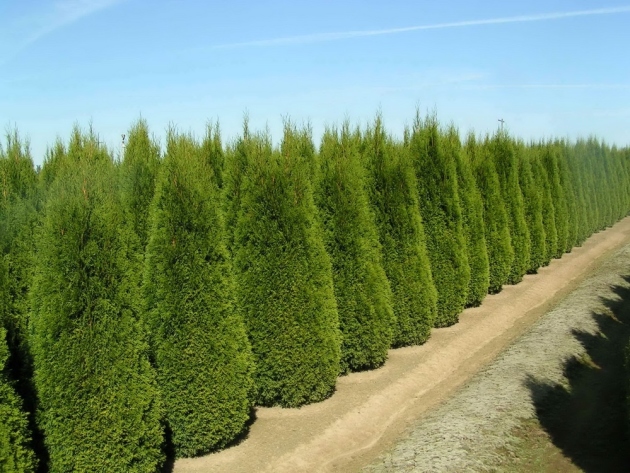
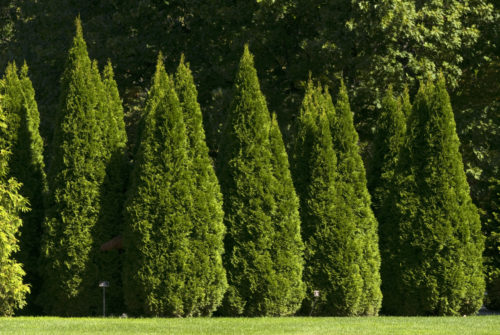
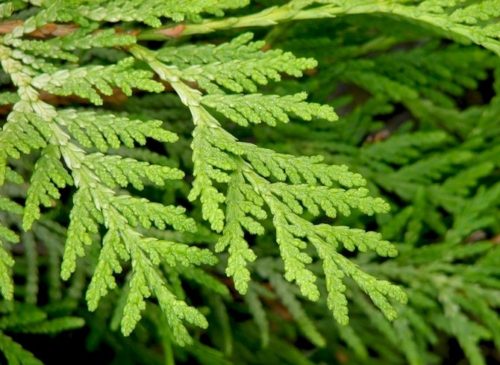
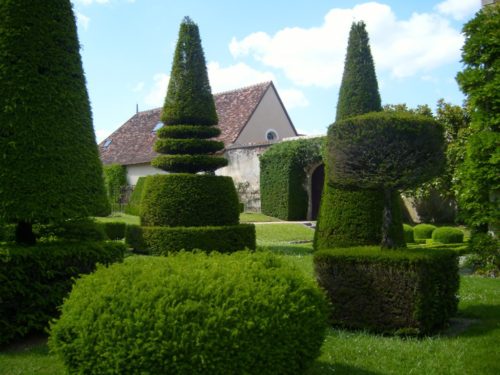
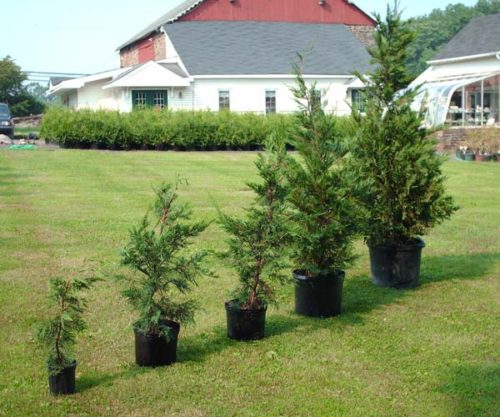


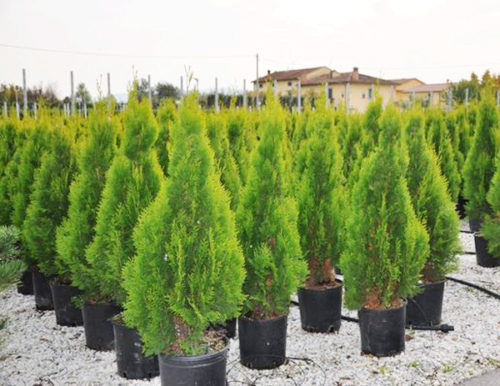
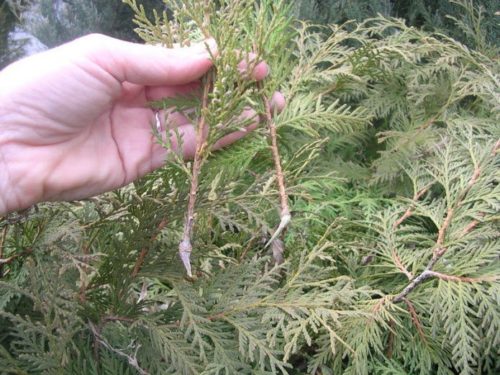


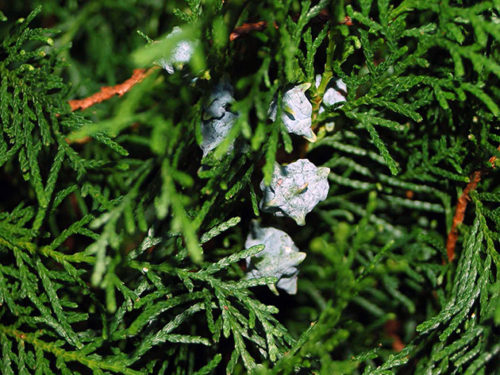
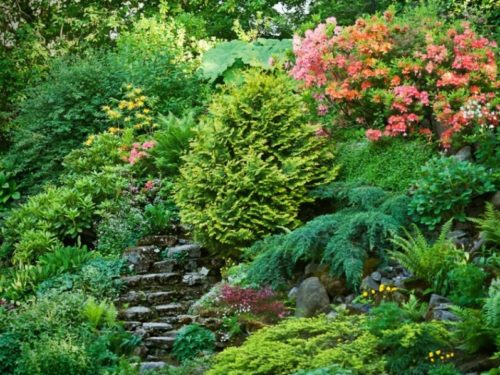
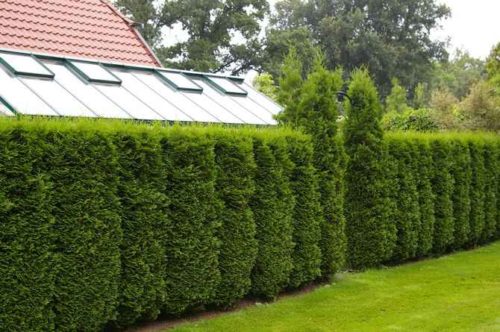
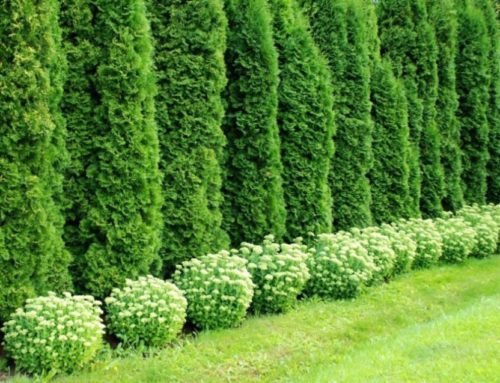
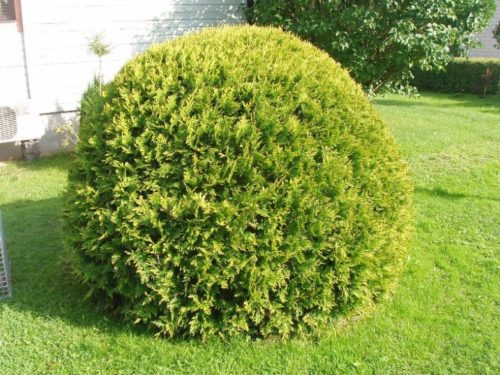












 Start a discussion ...
Start a discussion ...